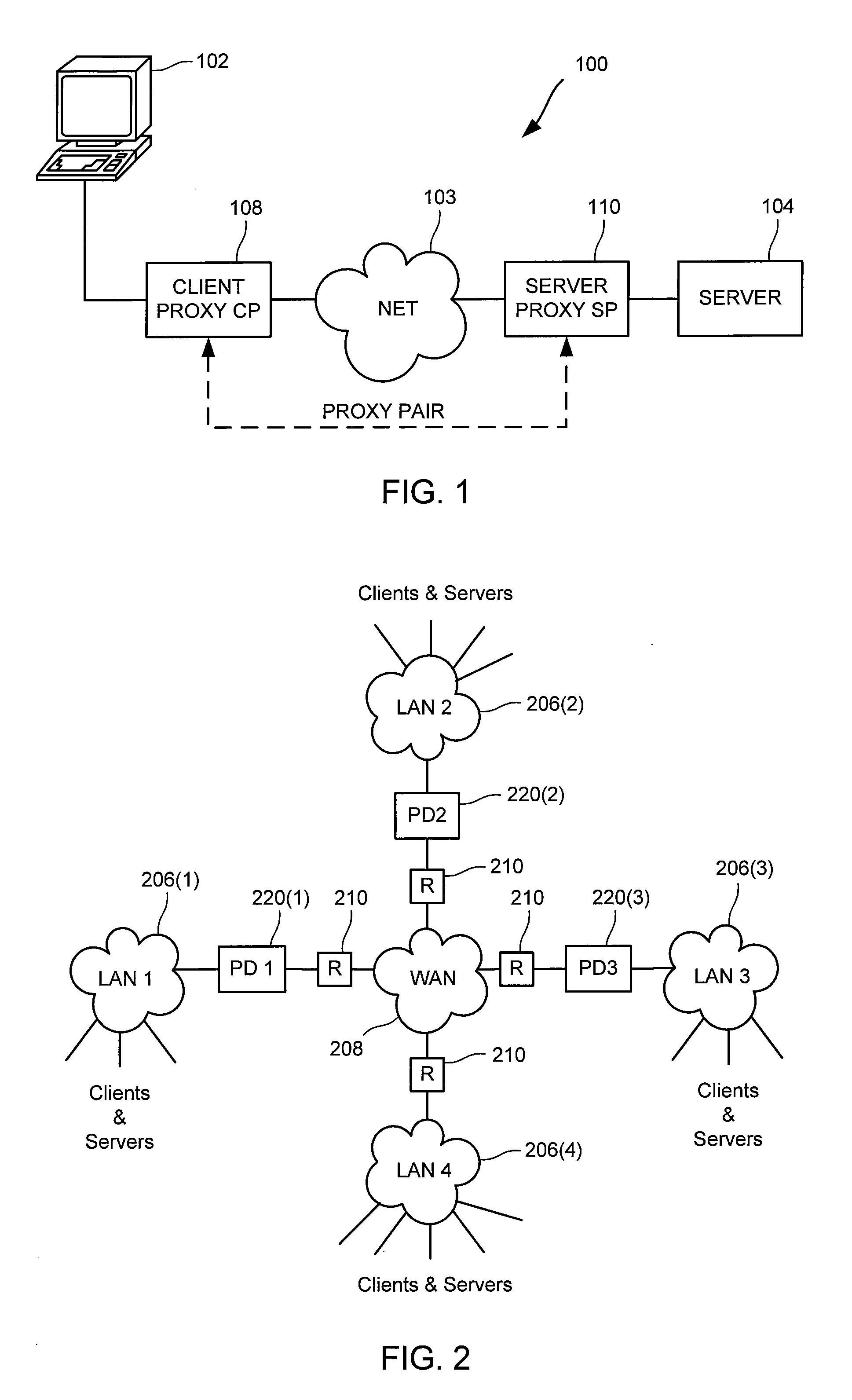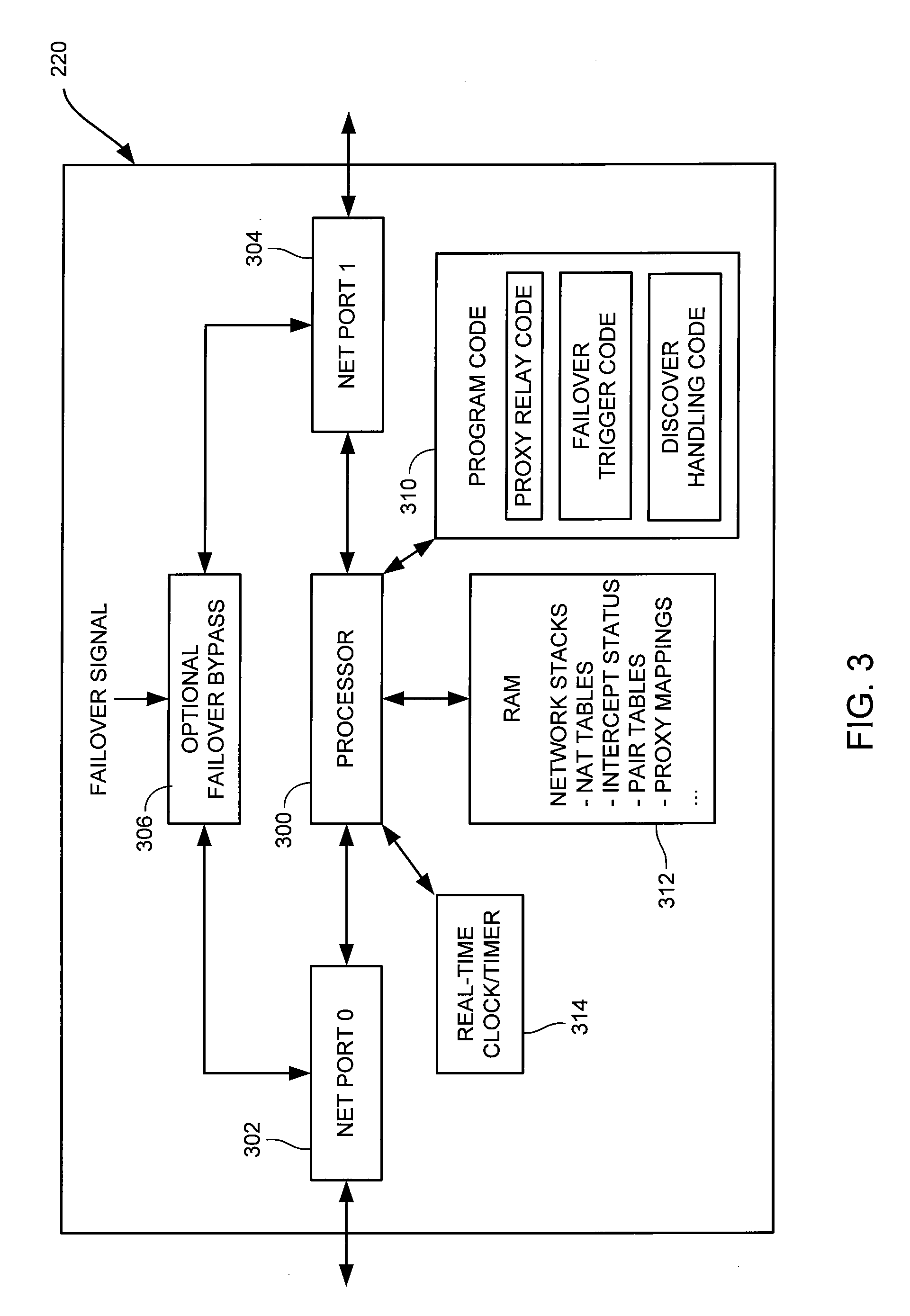Cooperative proxy auto-discovery and connection interception
a proxy and cooperative technology, applied in the field of cooperative proxy auto-discovery and connection interception, can solve the problems of administrative burden and administrative burden on a network administrator, and make some operations infeasible, so as to optimize network transactions, transparently intercept network transactions, and reduce bandwidth usage and apparent network latency
- Summary
- Abstract
- Description
- Claims
- Application Information
AI Technical Summary
Benefits of technology
Problems solved by technology
Method used
Image
Examples
Embodiment Construction
[0040]The present invention has many applications, as will be apparent after reading this disclosure. In describing an embodiment of proxy discovery or network transaction interception according to the present invention, only a few of the possible variations are described. Other applications and variations will be apparent to one of ordinary skill in the art, so the invention should not be construed as narrowly as the examples, but rather in accordance with the appended claims.
[0041]A general problem when deploying multiple network entities in a cooperative scenario, in which the devices must coordinate and interact with one another, is that of configuration. This problem is especially acute when trying to deploy cooperative transparent proxy functionality that depends on several cooperating network entities, such as where network traffic between a client and a server is to be intercepted by one proxy that in turn communicates with one or more other proxies to process the network tr...
PUM
 Login to View More
Login to View More Abstract
Description
Claims
Application Information
 Login to View More
Login to View More - R&D
- Intellectual Property
- Life Sciences
- Materials
- Tech Scout
- Unparalleled Data Quality
- Higher Quality Content
- 60% Fewer Hallucinations
Browse by: Latest US Patents, China's latest patents, Technical Efficacy Thesaurus, Application Domain, Technology Topic, Popular Technical Reports.
© 2025 PatSnap. All rights reserved.Legal|Privacy policy|Modern Slavery Act Transparency Statement|Sitemap|About US| Contact US: help@patsnap.com



